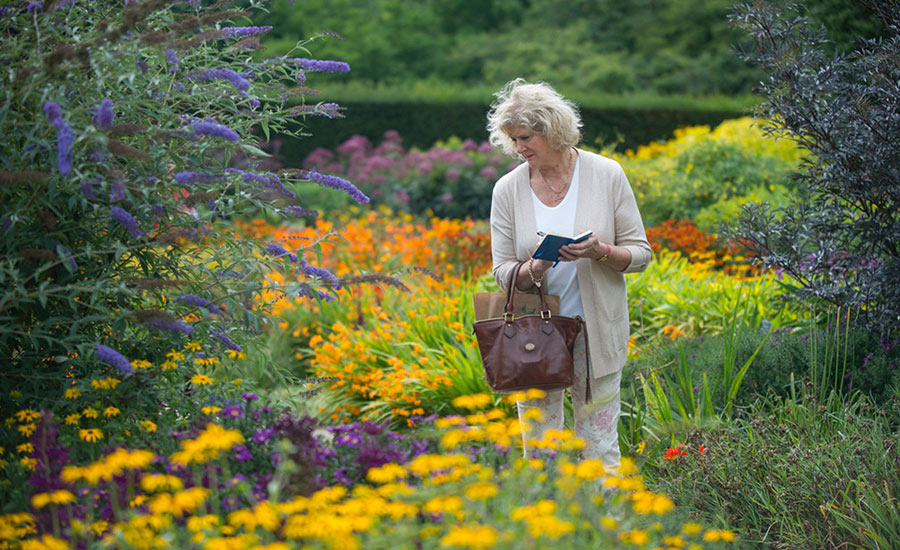The Best Summer Gardens
Staycationers shouldn’t miss out on visiting the best gardens the UK has to offer. Two RHS plantsmen select their favourite open gardens and show Hannah Stephenson how gardeners can copy them
There’s no shortage of inspiration when it comes to UK gardens – so if you’re staying at home this summer, take a notepad, pen and camera to some of the best in the country.
Garden curators Jon Webster, from RHS Garden Rosemoor in Devon, and Paul Cook, from RHS Garden Harlow Carr in Yorkshire, offer their own preferences.
:: Arley Hall & Gardens, Arley, Northwich, Cheshire (www.arleyhallandgardens.com/
The double herbaceous border, spanning around 100m from one end to the other, is a sight to behold in this private 10-acre garden in high summer. “It’s been in the same family for years and each generation has made a contribution to the garden,” says Cook. Crocosmias, heleniums and other sizzling border plants create a stunning display in summer and beyond.
:: RHS Garden Wisley, Woking, Surrey (www.rhs.org.uk/ 0845 260 9000)
Webster explains: “This is one of my favourites. I spent nearly 10 years working there. In summer, head for the mixed borders, which offer a very impressive vista of hornbeam hedge-backed herbaceous beds with everything from pollarded trees to dahlias, geraniums and geums at the front edge, sunflowers at the back.”
:: Wollerton Old Hall Garden, Wollerton, Market Drayton, Shropshire (wollertonoldhallgarden.com/
A mix of formal structure and soft planting schemes makes Wollerton an extremely special, high-quality garden. Set around a 16th century Tudor house, it covers four acres and has developed into an important modern garden in the English garden tradition with echoes of arts and crafts. The garden has significant collections of rare perennials, salvias, paniculata phlox and clematis. Admire the perfectly clipped topiary and the plantings which soften the structure.
:: RHS Garden Harlow Carr, Harrogate, North Yorkshire (www.rhs.org.uk/ 01433 565 418)
This wonderful garden looks at horticulture through the ages, with compartmentalised gardens starting with the Edwardian era through to a contemporary Diarmuid Gavin garden at the end, with a bright purple wall and modern container planting schemes, including everlasting flowers and a twisted sedge.
:: Ness Botanic Gardens, University of Liverpool, Ness (www.nessgardens.org.uk/ 0845 030 4063)
“It’s in a really dry area, on a sandstone outcrop and the gardens slope away from it on a south-facing slope,” Cook explains. “The sandstone terraces are full of amazing tender plants that you would be more likely to see in a Cornish garden than in the north west. Unusual plants include climbing senecio and blue plumbago, which are more suited to the Mediterranean, along with beautiful agapanthus and kniphofias.”
:: Burton Agnes Hall, Driffield, East Yorkshire (www.burtonagnes.com/ 01262 490 324)
Stunning gardens fringe this Norman manor house including the walled garden, which contains more than 4,000 different plant species, herbaceous borders, a jungle garden and national collection of campanulas, and a woodland walk. Check out the life-sized chess board in this family-friendly spot.
:: RHS Garden Rosemoor, Great Torrington, Devon (www.rhs.org.uk/ 0845 265 8072)
In August, visitors should not miss the hot garden, Rosemoor’s take on prairie-style planting, which is full of red, oranges and yellow flowers. Look out for Helenium ‘Sahin’s Early Flowerer’ whose daisy yellow flowers are streaked with orange, mingling with dazzling monardas. The heat is turned up when the reds, oranges, blues and purples of salvia, lobelia, hemerocallis, kniphofia, coreopsis, crocosmia, rudbeckia and achillea join in a little later.
GET THE LOOK…
Gardeners who want to create their own hot garden will need a sunny spot in which to plant these sizzling perennials, Webster advises.
“A lot of these plants aren’t fussy about soil,” he says. “They are general herbaceous perennials which come from north America and they are hardy. You need well-drained, moisture-retentive soil which isn’t overly rich. You get more flowers in the sun. Some of them will need staking, such as clumps of monardas and heleniums which reach around 5ft.
“Repeat planting helps to hold colour and texture together, even if it’s a small garden. Keep up with the dead-heading to prolong the season.”
Latest posts by Sally - Silversurfer's Editor (see all)
- Do you eat a chocolate digestive with the chocolate facing up or down? - April 24, 2025
- More to explore: A life positive journey after 50 - April 24, 2025
- Do you snore? - April 24, 2025
- UK ban on EU cheese and meat: What it means for you - April 19, 2025
- Would you support personalised health MOTs at retirement age? - April 19, 2025



















